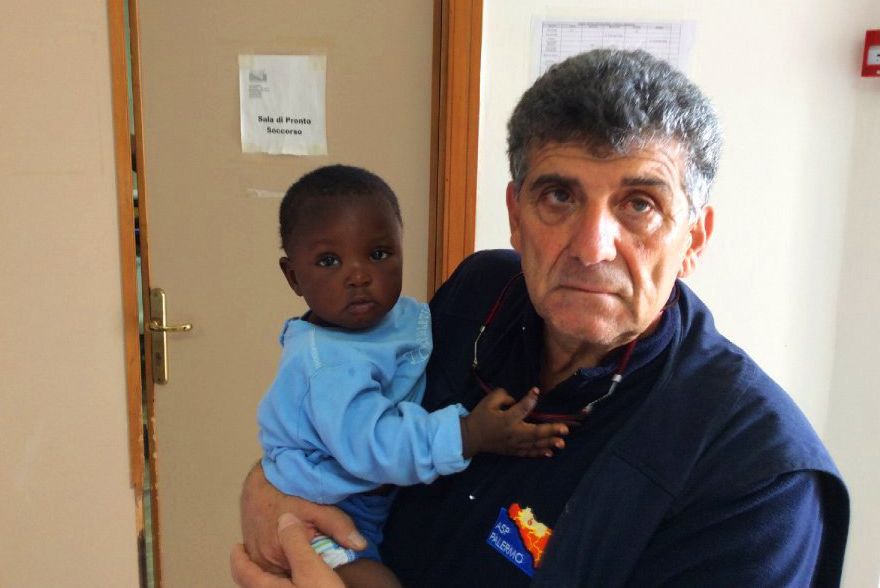
LAMPEDUSA, Italy ― The 26-year-old Nigerian refused to lower the waist of his jeans as part of a routine check for scabies. He had just arrived on the Italian island of Lampedusa, crammed into a rickety wooden boat with 150 other migrants.
Waiting for them at the quayside was Pietro Bartolo, 60, who for the better part of the last two decades was the only doctor treating refugees and migrants on the island. Lampedusa is a remote slab of flat rock in the Mediterranean that lies closer to Tunisia than Sicily or mainland Italy. Some 400,000 migrants, most departing from Libya, have landed on the tiny island in the past 20 years alone.
With a look of terror in his eyes, the young man opposed the doctor’s request. Bartolo relented and went on to check over the other new arrivals.
A few days later, he received a call from a colleague at the island’s migrant shelter, a trailer-like structure tucked away from Lampedusa’s lush beaches. One of the asylum seekers was being sent over to Bartolo for a “serious” matter.
It was the same man. Again the doctor asked him to lower his jeans, and again he refused. But after some time, the man finally unbuckled his belt and removed his jeans and underwear.
What the doctor saw made him retch.
“His testicles were there, but between them, there was nothing. His penis had been cut off,” Bartolo told The WorldPost. “I’d never seen anything like it in my life. I was speechless. I couldn’t do anything to help. I felt useless. He had been too ashamed to come to me. Any possibility for him to live a normal life, to have children, was gone.”
The man eventually recounted his story, one of several in Bartolo’s recently published book, Salt Tears.
He’d had a happy life in Nigeria, despite the havoc wreaked in recent years by the extremist Islamist group, Boko Haram. His family was not well-off, but it wasn’t poor either. One night, as he was walking with his girlfriend, a group of men approached and started to antagonize the couple, hurling insults at his partner. He leapt to her defense, but the group pushed him to the ground and savagely beat him. One pulled out a machete and sliced off his penis. The gang strutted off, leaving him for dead and taking with them his manhood as a trophy.
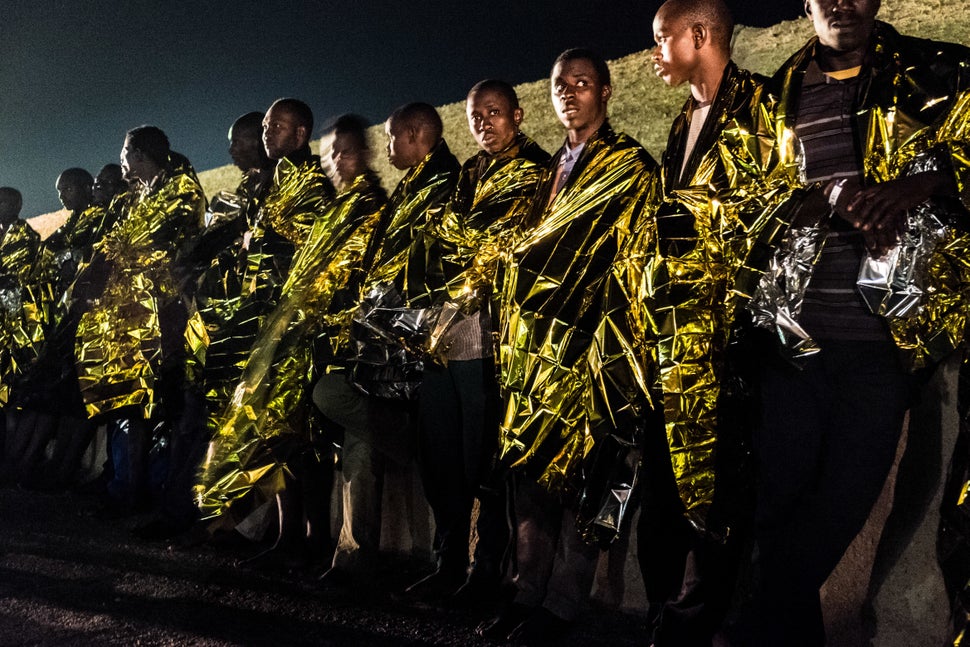 Marco Panzetti/NurPhoto/Getty
Marco Panzetti/NurPhoto/GettyIt was mid-October, and summer lingered in Lampedusa. Just over 6,500 people live here ― a lot of fishermen, plus a vibrant tourism industry. The beaches, especially the famed “Rabbit Beach,” regularly rank among the world’s best in travel surveys. With rain lashing parts of mainland Italy, they were still busy with tourists.
Bartolo, a Lampedusa native, is the kind of person who puts strangers at ease. He’s non-judgmental and a good listener. But he is rarely at peace.
“I never really relax,” he said. “People say to me, ‘You’re a doctor. You must be used to it.’ But it’s not true. These painful stories ― of war, poverty, torture ― are a part of me now.”
Since the late 1990s, when Lampedusa became the prime gateway to Europe for migrants from Africa, Bartolo has treated, by his estimate, about 250,000 refugees and migrants. Migrants succumb to a variety of accidents and ailments, some of which are deadly ― hypothermia, dehydration, malnourishment or, especially recently due to traffickers’ decrepit dinghies, chemical burns caused by petrol spills. He’s treated countless children traveling alone, as well as many pregnant women. One pregnant woman, an 18-year-old from Nigeria, had been gang raped by five men.
But for every horror story, he seems to have one of hope and resilience. In August, he helped deliver a healthy baby boy from Mali on a Lampedusa patrol boat. The child was later named after the doctor, out of gratitude. During another rescue, Bartolo noticed that a woman who had been placed among the dead, in a body bag, was actually still alive. Her lungs were full of water and gasoline. They rushed her to the hospital and, after 30 minutes, resuscitated her.
Already, 2016 has become the deadliest year ever for migrant crossings in the Mediterranean. Although fewer migrants are coming than last year, the journey is three times more deadly this year; a record high of 3,740 have died so far. The rise in fatalities is due to smugglers using poorer-quality dinghies and inflatable rafts. The smugglers have also been sending out thousands of people at once, perhaps to lower the risk of detection, which makes the work of rescuers harder.
Bartolo dreads examining corpses. When a person dies and there’s no one there to identify him or her, Bartolo, a father of three, has to remove a body part from the corpse to extract DNA for identification records. The records are then filed into a database that loved ones can check for their deceased relatives.
“You have to take samples. You have to cut off a finger or a rib. You have to cut the ear off a child,” he said. “Even after death, another affront.”
“All of this leaves you so angry. It leaves you with emptiness in your gut, a hole.”
He declined to put a figure on the number of bodies he’s had to identify, saying, “Migrants are not numbers. They’re people with stories.”
 ARIS MESSINIS/Getty
ARIS MESSINIS/GettyA photograph of Bartolo with Pope Francis, who visited the island in 2013, hangs on the wall above the doctor’s desk. He said he’s “a believer,” but confessed to skipping mass. “When I need something from God and ask for help, it always comes,” he joked.
A football fan, he proudly showed off a ball signed by the players of the Sicilian side, Palermo, in 2005, although he conceded his favorite club is the top-flight northern Italian team, Inter Milan.
As we spoke about his work with migrants, he scrolled through dozens of images on his phone, a record of what he’s seen over the last few years. Some photos showed boatloads of people, most traveling from Africa, being brought to safety. Others showed corpses. He lingered on one of a newborn baby girl taken aboard a rubber dinghy. The umbilical cord had been tied off with a clump of hair. “The mother pulled her hair out to tie the cord. These women are extraordinary. Could you imagine a woman in our part of the world doing that?”
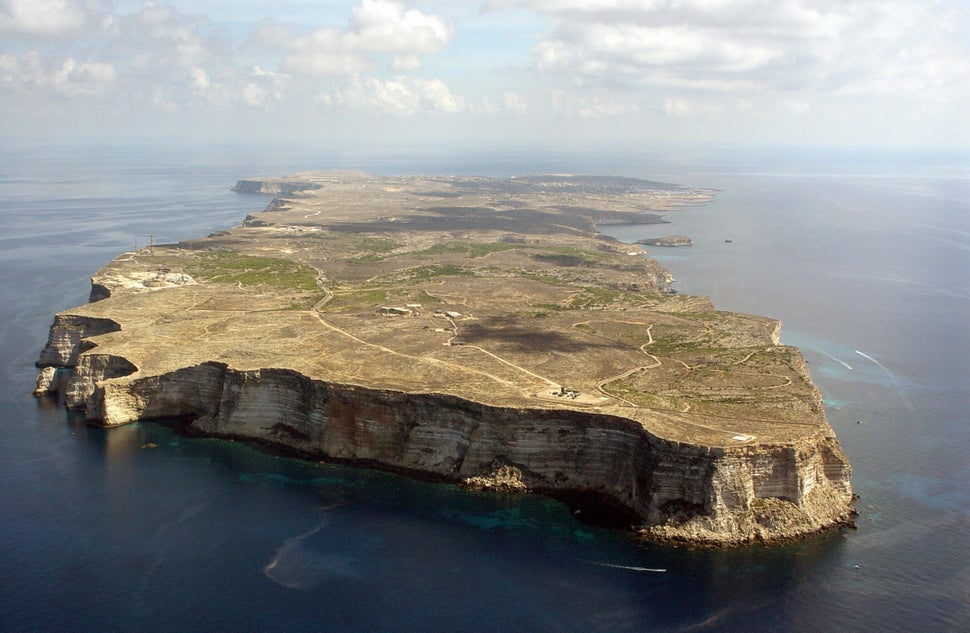 STR/AFP/Getty
STR/AFP/GettyWhen Bartolo was 16, he fell overboard into rough and frigid water during a fishing trip with his father and a few local fishermen. The boat was 40 miles from land. Petrified, he screamed for help and tried to stay afloat as the waves tossed him from side to side. His father was at the helm of the boat but didn’t hear his son’s cries. The other men on board were sound asleep.
“I really believed I was going to die,” Bartolo said. His father eventually heard his cries and turned to see his son struggling in the waves. He managed to pull him to safety.
Despite the near-death experience, Bartolo still wanted to follow in his father’s footsteps and become a fisherman, at least for a while. But he soon changed course. “As a child,” he said, “I witnessed too many negative events due to the lack of first aid and medical shortages on the island.”
His elder brother Mimmo suffered severe brain damage from meningitis when he was 18 months old, Bartolo said. Because of the lack of psychiatric care in Lampedusa at the time, his parents had no choice but to send Mimmo, who died last year, to a mental hospital in Palermo.
“The conditions there were terrible. What I saw – filthy sheets, mattresses – has stayed with me,” he recalled. “It was very tough for my family.”
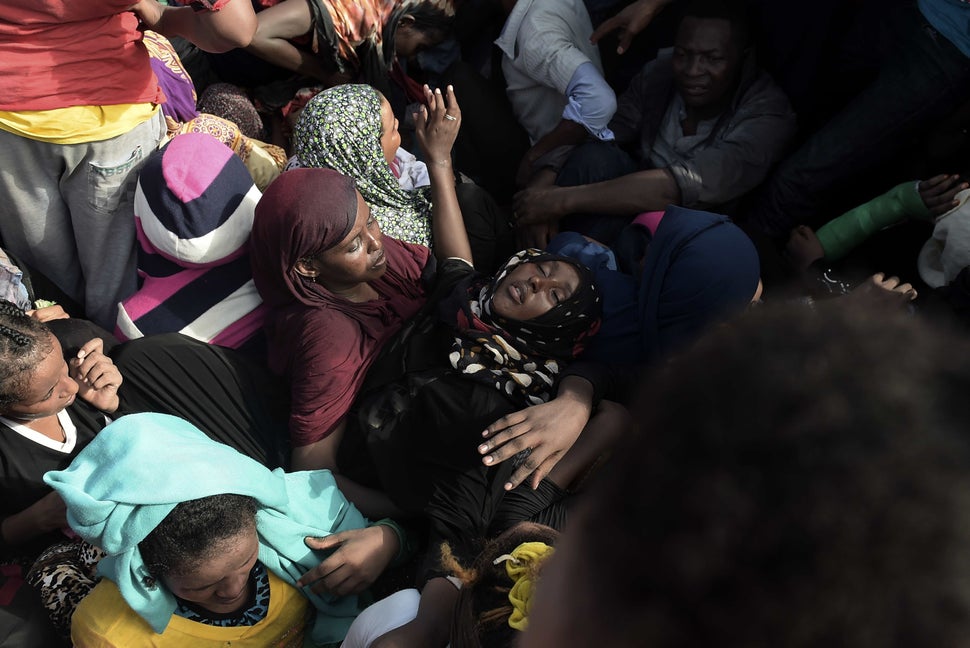 ARIS MESSINIS/Getty
ARIS MESSINIS/GettyBartolo graduated from the University of Catania, in Sicily, in the early 1980s, with a specialization in gynecology. In 1991, after three Tunisian men were found hiding in Lampedusa’s Hotel Medusa, he began what he believes is his life mission.
“It marked the first arrival of migrants to Lampedusa. It started with North Africans simply landing on the beach,” Bartolo said. For his first 20 years, Bartolo was the only doctor on the island treating migrants.
“Then, out of nowhere, the number grew,” he said. “They all came with different stories.” The influx began in 2011, after the Arab Spring revolutions in the Middle East and North Africa, the fall of former Libyan leader Muammar Gaddafi and, later, civil war in Syria.
Now, Bartolo, on call year-round, has a small team of doctors and nurses to assist him. When refugees and migrants arrive, his team is waiting for them at the dock with medical supplies. Volunteers hand out thermal blankets and hot drinks. “Most arrive healthy and strong, bringing diseases or injuries only suffered during the long journey,” Bartolo said. “Their most significant illness is the psychological one, linked to the violence and trauma they’ve endured.”
He and his team check migrants for infectious diseases immediately as they step off the boat. They check everyone’s hands for signs of scabies, a skin condition caused by burrowing mites that is prevalent in the squalid migrant camps of Libya. Men are required to show their genital area for signs of the illness. Pregnant women are given ultrasounds. Those who are sick are taken to the hospital.
Sometimes people tell him about why they left and what the journey entailed. Their harrowing stories keep him up at night, he said.
“I do my best to heal their physical wounds, to relieve their pain. But one of my worries is not having the means to heal the psychological wounds.”
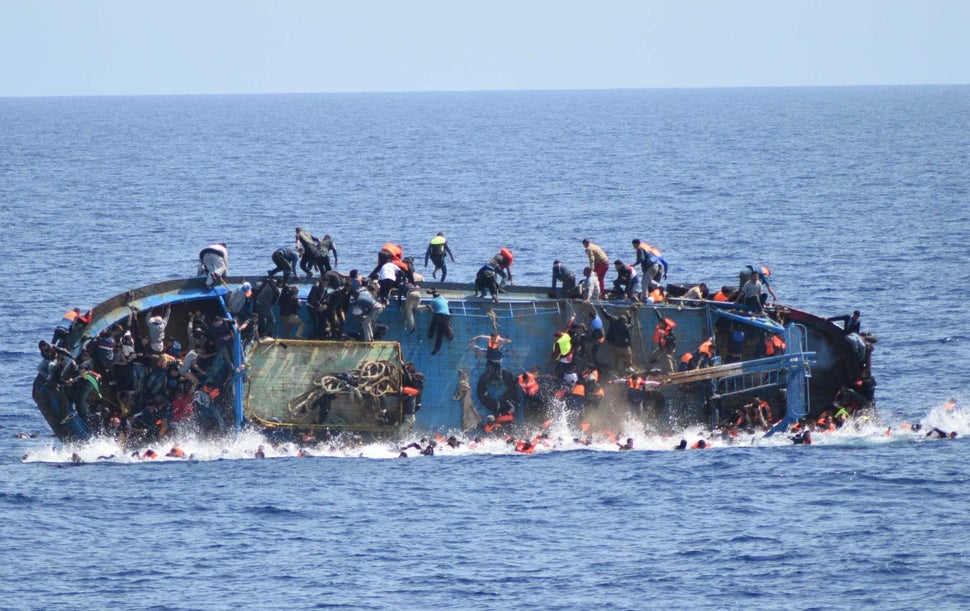 Anadolu Agency/Getty
Anadolu Agency/Getty
Bartolo was already at the quayside early on Oct. 3, 2013, assisting two boatloads of Syrians, when he got a call from the island’s coast guard chief. A boat had capsized, not far off the shore of the idyllic Rabbit Beach. It was believed to be carrying about 500 people, mostly Eritreans and Somalis. In the dark, someone aboard lit a blanket on fire to signal the island for assistance. But the fire spread. Attempting to escape the flames, the passengers raced to one side of the boat, causing it to capsize and sink. Many could not swim and drowned within sight of Europe’s shores.
Some of the island’s fishermen, working overnight and hearing terrified screams emerging from the sea, were among the first who attempted a rescue. “Lampedusans save people who need help at sea, independent of skin color or nationality. This is the law of the island,” Bartolo said. Italian divers later discovered dozens more who perished while crammed into the boat’s tiny hold. In total, more than 350 people died.
In May this year, Bartolo received a call about a migrant rescue in the Strait of Sicily. Some 20 migrants, mostly women, had suffered serious burns from leaking fuel and were brought to Lampedusa. As Bartolo attended to his patients, a volunteer on the patrol boat walked up and handed him a “beautiful baby, with big brown eyes,” he recalled.
The nine-month-old Nigerian girl, named Favour, survived the journey, but both of her parents drowned. A heartstring-tugging photo (above) of Bartolo holding the now orphaned child went viral online. The doctor and his wife, Rita, asked to adopt her. As the photo made its way around the world, Bartolo received hundreds of calls from people offering to adopt Favour. She was eventually taken in by a couple in Sicily.
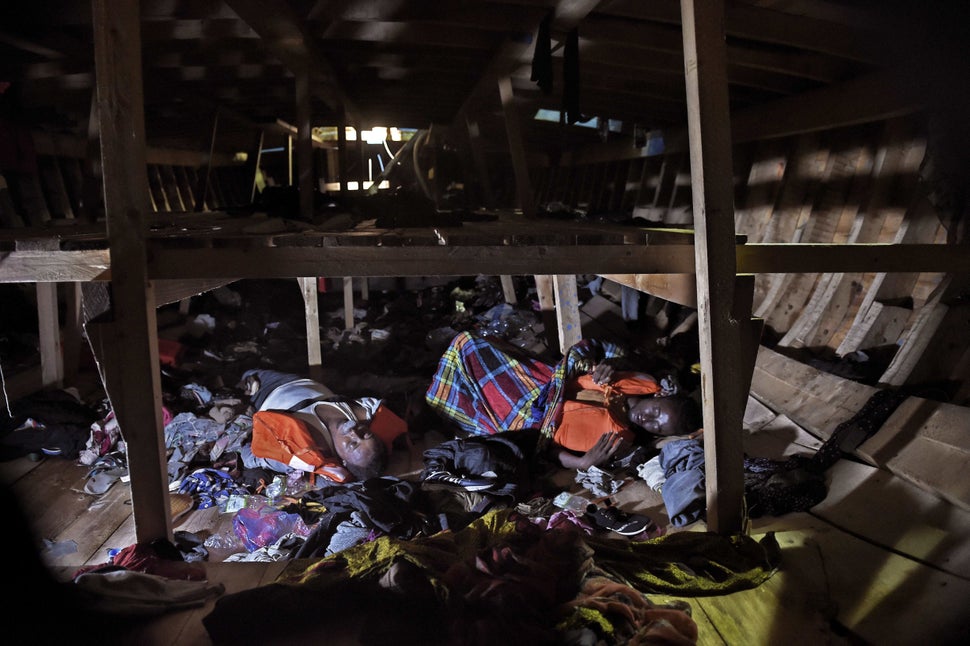 ARIS MESSINIS/Getty
ARIS MESSINIS/GettyBartolo’s work recently gained exposure beyond Lampedusa, thanks mostly to his role in “Fire At Sea,” a documentary that contrasts the migrant crisis with everyday island life. The film, directed by Gianfranco Rosi and in U.S. theaters now, is Italy’s foreign film Oscar hopeful for 2017.
But the doctor feels uneasy about the newfound attention. He had to be convinced to participate in the film and again to write a book about his experiences. Lampedusans are proud of their doctor; they call him a hero. But he’s quick to point out that it’s not just about him – all the medics work hard. It’s all worth it in the end, he said, if the world wakes up to what’s happening in the Mediterranean, off the coasts of Greece and Spain as well as Italy.
‘The mother pulled her hair out to tie the umbilical cord. Could you imagine a woman in our part of the world doing that?’
He lives in a humble apartment on Lampedusa’s main street, Via Roma. In his kitchen, he pointed to a pile of letters, messages of support from all over Italy, lying on the table. Some come with donations. He opened one, a letter with a check for 50 pounds, and read, “Bartolo, you’re an extraordinary man.” He paused, choking up, and said he couldn’t continue reading.
Bartolo is harshly critical of European Union policies towards the refugee and migrant crisis, saying they reflect a callous indifference to suffering. In September last year, EU leaders signed a policy to distribute refugees among EU states, but it has by and large failed, thanks to the refusal of some states, including Poland and Hungary, to accept the quotas. The Balkan route was effectively blocked in March after countries including Macedonia, Slovenia, Croatia and Serbia tightened border controls to stop the flow of people heading from Greece to northern Europe. Austria and Switzerland also tightened controls at their borders with Italy.
The press has distorted and exaggerated the refugee and migrant crisis, misinforming people and fueling a rise in support for anti-immigrant parties across Europe, Bartolo argued. “They talk about an ‘invasion,’” he said. “They put fear in people. They say there’s not enough room. They say these people are terrorists. This couldn’t be further from the truth. These people have been through hell but they rarely complain. Yes, they have their frustrations, like we all do. They need to be able to work and move freely.”
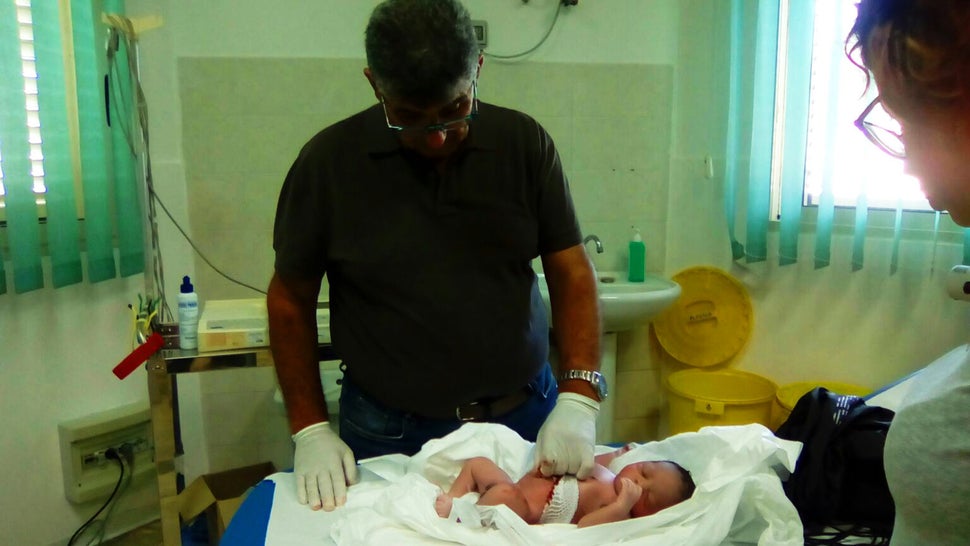 Poliambulatorio Lampedusa/Pietro Bartolo
Poliambulatorio Lampedusa/Pietro BartoloItaly saw 153,450 refugees and migrants arrive so far this year, according to the most recent figures, although 2,200 more were rescued off Sicily last weekend. Italy has done its best to accommodate migrants, but with shelters bursting at the seams, patience is waning. Italy can no longer cope with the huge number of arrivals, Prime Minister Matteo Renzi said Tuesday, slamming Italy’s EU partners for failing to help.
Italy’s anti-immigrant far-right party, Northern League, has so far failed to attract the level of support seen for far-right parties elsewhere in Europe, such as France and Germany. But Renzi’s terse comments came a day after residents of a small fishing village in northern Italy, worried about the arrival of 12 refugees, barricaded the entrance to their town.
‘These people have been through hell but they rarely complain.’
Some 200 people are currently living in Lampedusa’s migrant detention center. Technically, they’re not allowed to leave the center, but authorities often look the other way as people crawl out through a hole in the fence to wander the island. They have become part of the community. They go swimming, or watch football outside bars on Via Roma. On Sundays, they go to mass. A group of three or four gathers each night on a street bench for Italian lessons with Antonino Taranto, who manages the island’s cultural association office across the street.
Many islanders have rallied to house migrants or offer them food and clothes. But as the number started to swell, they fretted about the impact on tourism. They needn’t have worried – visitor numbers were up by 36 percent this summer, according to figures published this month.
Bartolo took me to a patch of shrubland at the far southern end of the island, where there is a junkyard of items left behind by refugees and migrants. Dilapidated wooden boats, each battered by a perilous journey, are stacked alongside each other. Abandoned shoes and plastic water bottles surround them.
The doctor said he thinks often about those who have come and gone. He keeps in touch with many, including a man named Omar who now lives in Finland. Winter is already underway there, and Bartolo is preparing a package of warm clothes to send him.
Over the years, the cruel situations the doctor has encountered have left him despondent at times. But he continues. “This is my life,” he said. “My work with migrants has taught me to be persistent, to never give up. All those who have passed through Lampedusa have given me more than I have given them.”
This was produced by The WorldPost, which is published by the Berggruen Institute. It won the Occhi Blu journalism award in Italy.
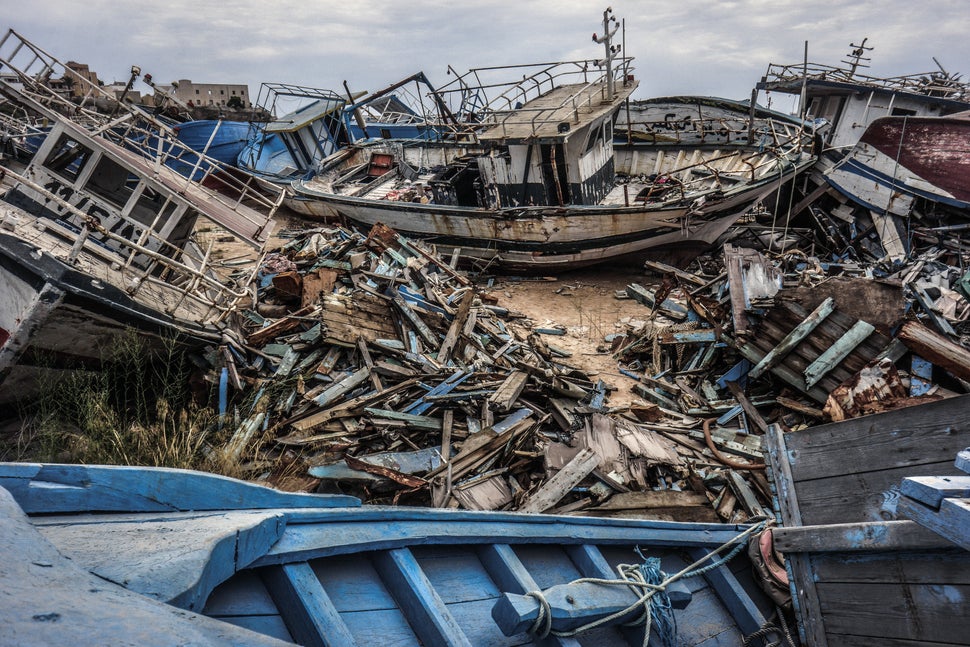 Giles Clarke/Getty
Giles Clarke/Getty
